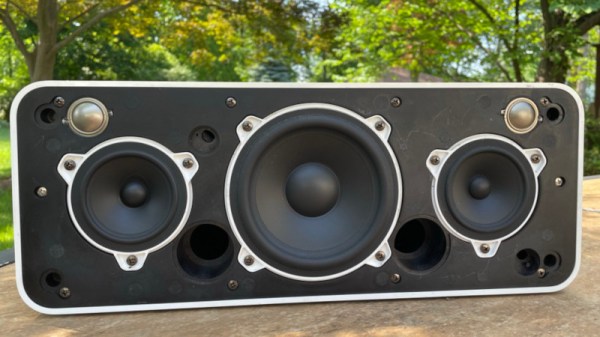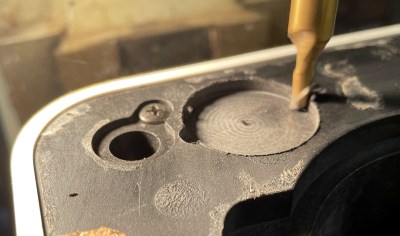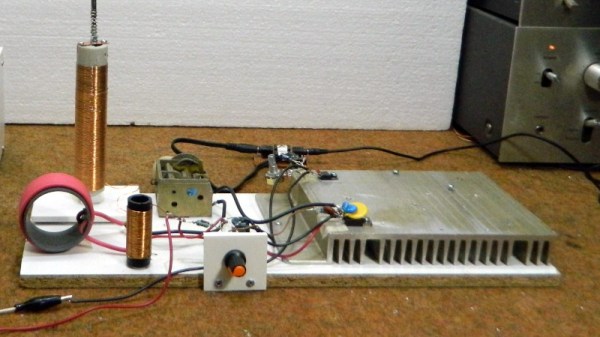The world of audio has produced a variety of different loudspeaker designs over the last century, though it’s fair to say that the trusty moving coil reigns supreme. That hasn’t stopped plenty of engineers from trying new ways to make sound though, and [R.U.H] is here with a home-made version of one of them. It’s a foil tweeter, a design in which a corrugated strip of foil is held in a magnetic field, and vibrates when an audio frequency current is passed through it.
He shows a couple of takes on the design, both with neodymium magnets but with different foils and 3D printed or wooden surrounds. They both make a noise when plugged into an amplifier, and unsurprisingly the thicker foil has less of the high notes.
We can see that in there is the possibility for a high quality tweeter, but we can’t help having one concern. This device has an extremely low impedance compared to the amplifier, and thus would probably be drawing far too much current. We’d expect it to be driven through a transformer instead, if he had any care for not killing the amplifier.
Happily there are other uses for a ribbon, they are far better known as microphones.
Continue reading “A Foil Tweeter, Sound From Kitchen Consumables”





 A look at the circuit diagram and construction will probably elicit the response from most of you that it looks a lot like a Tesla coil, and in fact that’s exactly what it is without the usual large capacitor “hat” on top. This arrangement has been used for commercial plasma tweeters using both tubes and semiconductors, and differs somewhat from the singing Tesla coils you may have seen giving live performances in that it’s designed to maintain a consistent small volume of discharge rather than a spectacular lightning show to thrill an audience.
A look at the circuit diagram and construction will probably elicit the response from most of you that it looks a lot like a Tesla coil, and in fact that’s exactly what it is without the usual large capacitor “hat” on top. This arrangement has been used for commercial plasma tweeters using both tubes and semiconductors, and differs somewhat from the singing Tesla coils you may have seen giving live performances in that it’s designed to maintain a consistent small volume of discharge rather than a spectacular lightning show to thrill an audience.









